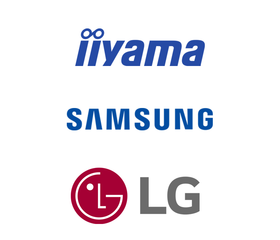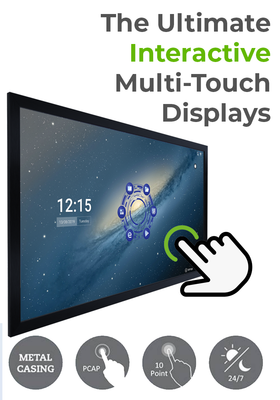
Difference between Open Frame Touchscreen and Interactive Touchscreen
When it comes to display technologies, open-frame monitors and interactive touchscreen monitors stand out as two distinct solutions catering to different needs. While open-frame monitors find their niche in integration within various devices, interactive touchscreen monitors offer an immersive and interactive user experience. Understanding the disparities between these two display types can help users make informed decisions regarding their specific requirements and applications.
An open-frame monitor and an interactive touchscreen monitor are two distinct types of displays, each serving different purposes. Here's a breakdown of the differences between the two:
-
Design and Construction:
-
Open-Frame Monitor: An open-frame monitor is essentially a display panel without an enclosure or housing. It typically consists of the LCD or LED panel, control electronics, and a mounting frame. These monitors are designed to be integrated into other devices or systems, such as kiosks, industrial equipment, or gaming machines.
-
Interactive Touchscreen Monitor: An interactive touchscreen monitor refers to a display that has a built-in touchscreen interface. It comes with an enclosure, which houses both the display panel and the touch-sensitive layer. The enclosure provides protection and often includes additional features like built-in speakers, USB ports, and connectivity options.
-
Open-Frame Monitor: An open-frame monitor is essentially a display panel without an enclosure or housing. It typically consists of the LCD or LED panel, control electronics, and a mounting frame. These monitors are designed to be integrated into other devices or systems, such as kiosks, industrial equipment, or gaming machines.
-
Touch Technology:
-
Open-Frame Monitor: Open-frame monitors usually do not have touch functionality by default. They are primarily used as display units and require external touch overlays or sensors to enable touch input.
-
Interactive Touchscreen Monitor: Interactive touchscreen monitors have touch functionality built directly into the display. They incorporate touch-sensitive layers, such as capacitive, resistive, or infrared, which allow users to interact with the screen by directly touching it.
-
Open-Frame Monitor: Open-frame monitors usually do not have touch functionality by default. They are primarily used as display units and require external touch overlays or sensors to enable touch input.
-
Intended Use:
-
Open-Frame Monitor: Open-frame monitors are commonly used in various industrial, commercial, and gaming applications where the display needs to be integrated into a larger system or equipment. These monitors are often customized to fit specific requirements and are not typically used as standalone consumer displays.
-
Interactive Touchscreen Monitor: Interactive touchscreen monitors are designed to provide direct user interaction through touch. They are widely used in applications like self-service kiosks, point-of-sale systems, information displays, interactive signage, education, and entertainment.
-
Open-Frame Monitor: Open-frame monitors are commonly used in various industrial, commercial, and gaming applications where the display needs to be integrated into a larger system or equipment. These monitors are often customized to fit specific requirements and are not typically used as standalone consumer displays.
-
Installation and Mounting:
- Open-Frame Monitor: Open-frame monitors are designed for easy integration into other systems. They typically have mounting holes or brackets on the sides for secure installation within a larger device or enclosure.
- Interactive Touchscreen Monitor: Interactive touchscreen monitors are usually standalone units and come with various mounting options. They can be mounted on a stand, wall-mounted, or integrated into specific kiosk or display setups.
Open-frame monitors and interactive touchscreen monitors represent two distinct categories of display technologies, each with its unique strengths and applications. Open-frame monitors provide the flexibility of integration, catering to the needs of OEM manufacturers and developers seeking to incorporate displays into their devices. On the other hand, interactive touchscreen monitors offer a captivating and interactive user experience, empowering users to engage directly with the content. By understanding these differences, users can select the appropriate display solution that aligns with their specific requirements, whether it's seamless integration or interactive engagement.




